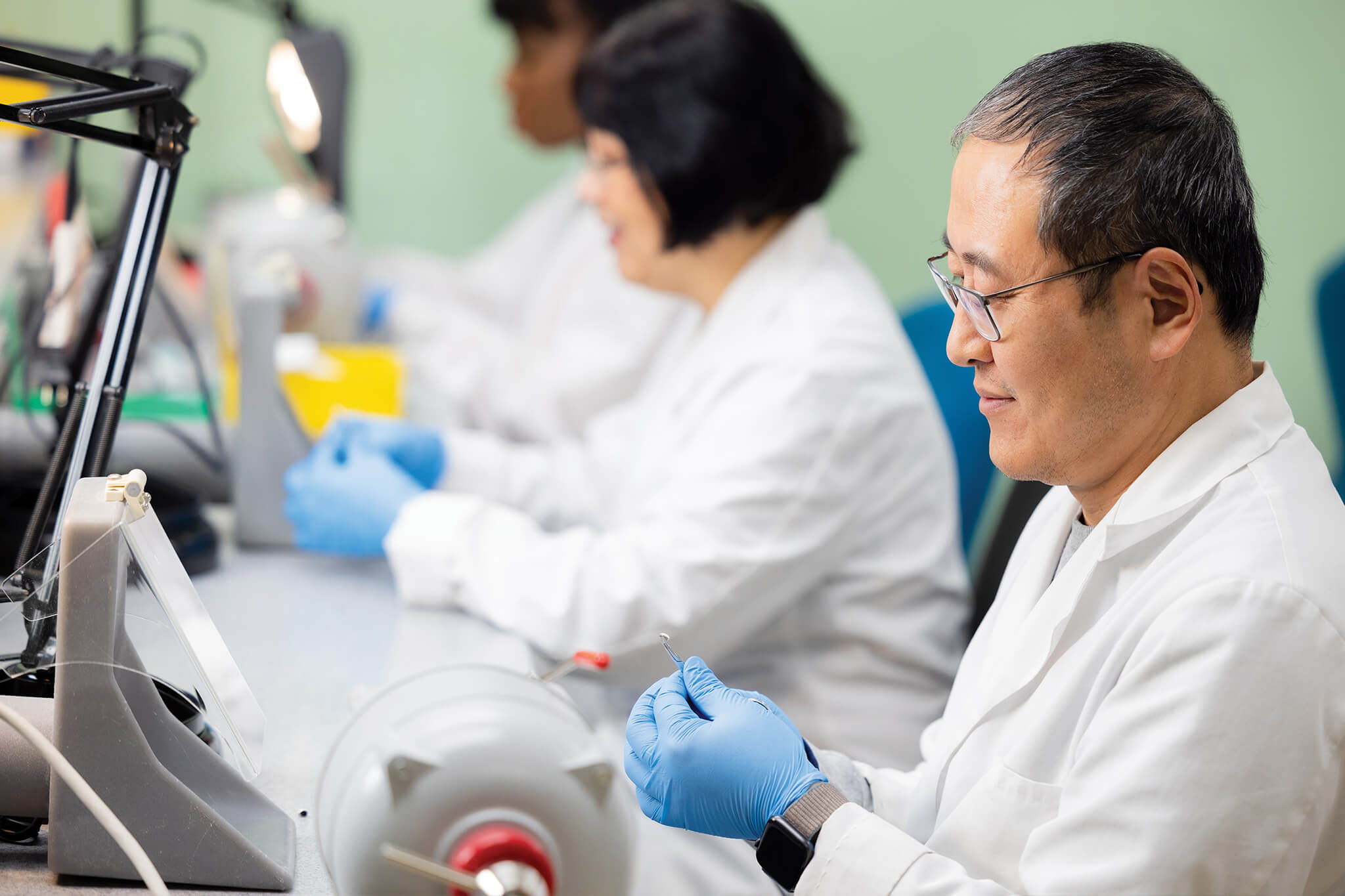
Innovations in Zirconia Primary Crowns
Restorative dental materials have come a long way since preformed metal crowns (PMCs) were introduced in the 1950s. Today, zirconia offers several advantages to dentists and their patients, and recent innovations have made zirconia crowns a particularly strong choice for pediatric dental restorations.
Zirconia: What Is It and How Did We Get Here?
A 2015 article in the journal Materials stated that zirconia “is the material of choice in contemporary restorative dentistry.”[1] Often called “ceramic steel,” zirconia is known for being more translucent than porcelain or other ceramics. Milled from a single block of crystals, zirconia crowns are also stronger and more durable than porcelain-fused-to-metal crowns.
In recent years, with a growing understanding of the importance of appearance to a young child’s self-esteem, more and more dentists are using zirconia crowns for primary restorations. In fact, in a recent literature review in the International Journal of Pediatric Dentistry, the authors cited a study that found “the aesthetics of restorative materials are a primary concern among the parents of pediatric patients.”[2]
Superior Aesthetics. Resistance to Wear.
Preformed zirconia crowns for primary teeth raise the bar for aesthetics. Cheng Crowns Zirconia are 33 percent more translucent than standard zirconia crowns without dark stump dentin show-through, so they more closely resemble natural teeth. Cheng Crowns’ unique coloring process contributes to the natural appearance.
Natural Appearance |
“We design and engineer our zirconia crowns to maximize aesthetics and simulate the natural look of teeth, while minimizing wear at occlusal contacts and reducing plaque buildup at the margins,” says Ben Cheng, Chief Operating Officer at Cheng Crowns and son of Peter Cheng, who founded the company in 1987.
Studies have shown that a polished surface provides greater resistance to wear compared to standard glazed zirconia crowns, and they reduce plaque buildup at the margins. Glazed surfaces create more contact friction on healthy opposing teeth and can wear off over time, altering the shading and appearance of the crown. Cheng Crowns’ exclusive Smart Polish process gives our zirconia crowns a satin finish on the facial/buccal surfaces and a mirror-like quality on the lingual and occlusal side and opening margins.
“We never skimp on quality,” Cheng says. “Our crowns have no ‘orange-peel’ surfaces, and they are uniformly smooth in surface and shading all around the crown.”
Great Retention. Easy Prep.
Zirconia crowns for primary teeth offer the aesthetics that young patients and their parents want. From a clinical perspective, zirconia crowns offer excellent biocompatibility. They are resistant to fracture. But they can’t be crimped the same way as porcelain-fused-to-metal crowns, a factor that initially raised concerns about prepping and seating. That’s why Cheng Crowns designed its zirconia crowns with Crimp Lock retentive margins—a market-first feature that offers a number of benefits.
“We were pre-crimping our resin-veneered Classic Crowns from Day 1, and it was something our customers appreciated. So when we designed the Zirconia crowns, we created them with a simulated crimp when we debuted them to achieve that same combination of functionality and ease of use,” Ben Cheng explains.
Crimp Lock Feature |
Engineered with a multi-axis milling process, the pioneering Crimp Lock feature has a knife-edge 0.2mm margin that allows for a natural emergence profile and unmatched retention.
“Crimp Lock creates just the right amount of undercut profile to improve retention without relying entirely on cement adhesion,” Cheng says. “We were the first to offer a simulated crimp pediatric zirconia crown and I believe we are still the only company to currently offer it.”
The innovative design supports ease of seating. It also reduces the likelihood of coronal leakages that could cause potential recontamination of the root canal.
More Than Meets the Eye
The preformed zirconia crowns also have a unique interior. The intaglio surfaces are treated to guarantee long-term clinical success.
“We etch the interiors for an additional layer of mechanical adhesion for the cement,” says Ben Cheng. “It helps aid the mechanical Crimp Lock margins for better retention and cement adhesion and vice versa.”
What’s more, Cheng Crowns Zirconia are precision-milled from monolithic zirconia, are exceptionally durable—more durable than natural enamel and 18 percent stronger than other zirconia crowns. A unique formula and sintering process gives Cheng Crowns Zirconia the highest flexural strength of any pediatric crown.
To learn more about restorative options, read our article on different types of pediatric crowns.
[1] Della Bona A, Pecho OE, Alessandretti R. Zirconia as a Dental Biomaterial. Materials. 2015;8:4978–4991. doi:10.3390/ma8084978
[2] Alrashdi M, Ardoin J, Liu JA. Zirconia crowns for children: A systematic review. Int J Paediatr Dent. 2022 Jan;32(1):66-81. doi: 10.1111/ipd.12793. Epub 2021 Apr 25. PMID: 33772904.